How To Keep Your Joints Healthy!
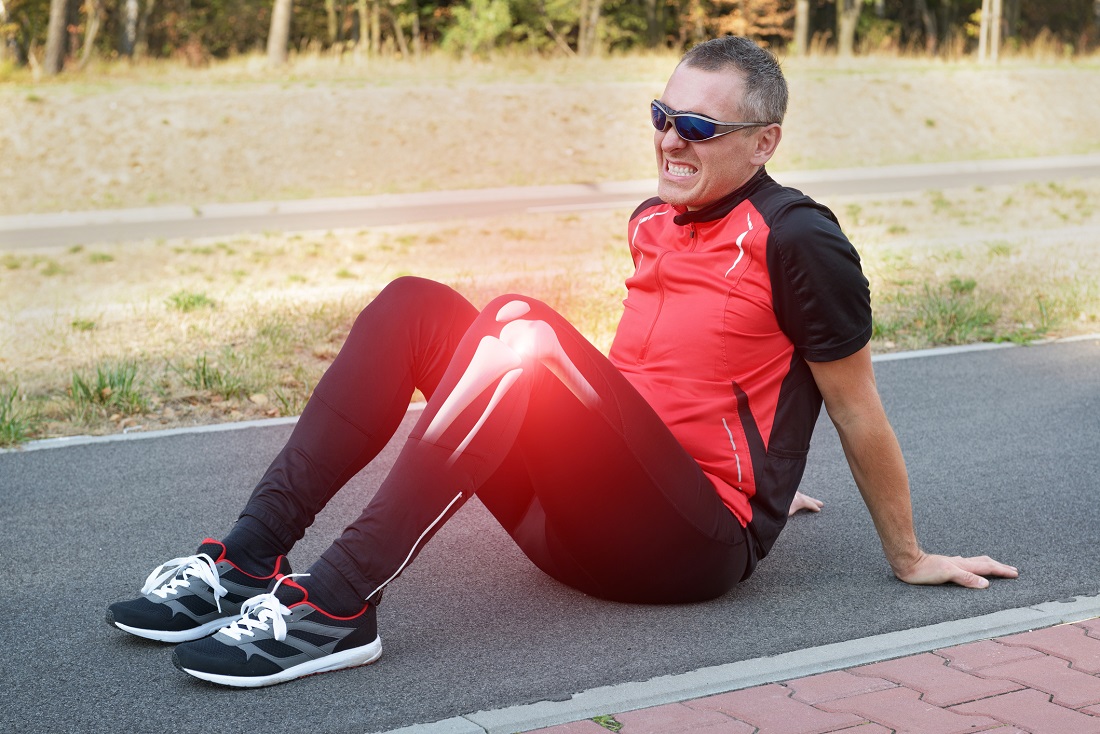
The golden rule of joint health – the more you move – the healthier your joints!1 So, put on your jogging shoes or cross trainers and get some exercise! This is an important advice if you are spending long hours crouched over your laptop. Don’t just spend your free time watching TV or catching up with social media. Instead – get physically active! A sedentary lifestyle is bad for your health. It’s bad for your joints2,3.
If you are sedentary – your metabolism slows down and worse – you tend to overeat. Not surprisingly – many sedentary people become overweight. For each extra kilogram of you weigh weight – you put four extra kilograms of pressure on your knees1,2. The extra weight can wear out the cartilage in your joints.
Excess body weight is associated with poor joint health. Losing weight is important if you have problem joints. Even a small amount of weight loss will be beneficial. Research shows that losing 5kg of body weight can reduce your risk of osteoarthritis by 50% 3,4,5. The bonus is that you will look great and feel much better!
Exercise
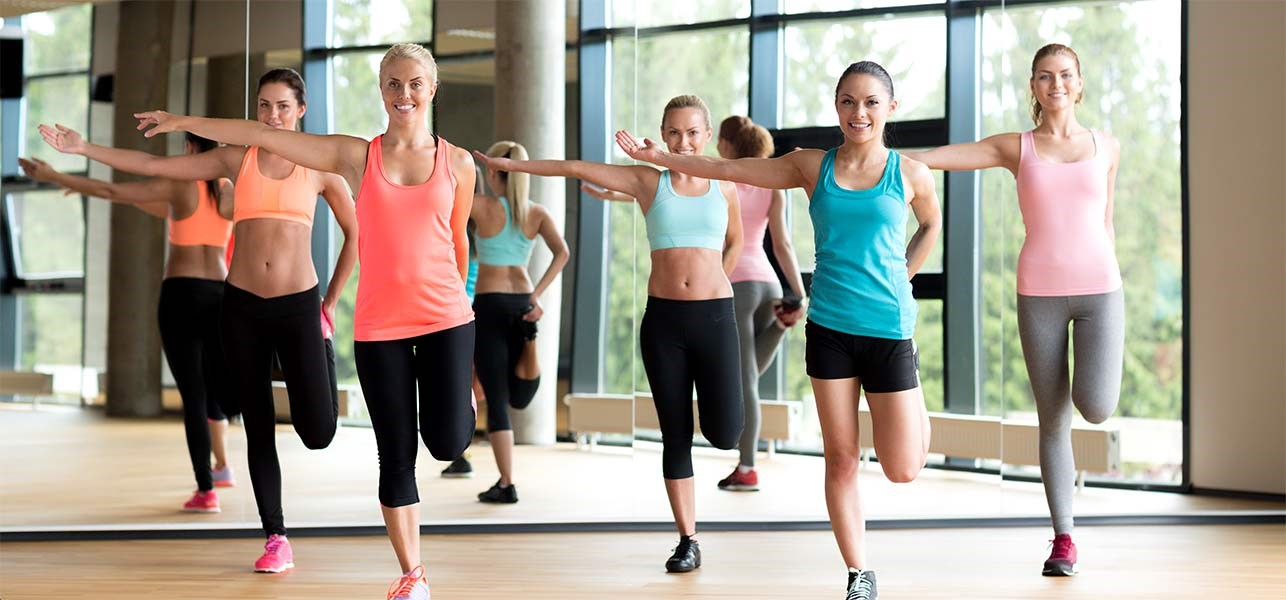
How much exercise do you need? About 150 mins of moderate aerobic activity per week. Or 75 mins of vigorous aerobic activity per week. Brisk walking is moderate aerobic activity. Step aerobics, jogging and running are vigorous aerobic activities. You can either walk briskly for 30 mins 5 days per week. Or exercise vigorously for 60 mins 2-3 times a week6.
If your joints are stiff and inflexible – start by increasing your range of motion. Range-of-motion exercises like stretching are a good way to keep your muscles and ligaments flexible and strong. If you need help – consult a physiotherapist. It is important to do stretching exercises 2-3 times a week. But do not stretch when your muscles are cold. Do a light warm-up first.
If your joints hurt when you run – start with low-impact aerobic exercises like walking, stationary cycling, and swimming. When your joints feel better – you can do high-impact exercises like step aerobics, cycling and running.
Avoid Injuries
While it’s important to exercise – it’s equally important to avoid injuries! Don't start any strenous activity without warming up. You should warm-up for 5-10 minutes. Start slowly and increase the intensity of your workout after warming up3.
If you run frequently – you can hurt your knee (runner’s knee)7. This is the most common injury affecting runners. It is caused by over-usage. Rest and let your knee recover. When your knee is better – you can resume running but allow more rest days in between your runs. Or reduce your running speed and distance. Elliptical training and swimming are knee-friendly alternatives to running. If your knee continue to hurt – seek advice from a sports physician. It’s important to be aware that knee injuries can lead to early onset of osteo-arthritis8.
When performing strength training - do not attempt exercises that are too tough on your joints. It is normal to feel your muscles ache after a strenous workout. But you should not feel pain. That could be a torn muscle or ligament. Listen to your body and learn the difference between “good” muscle-building aches and the “bad” pain caused by injured tissue2.
Sudden exertions may also cause injury. If you have to handle heavy loads- use your largest joints and strongest muscles. Don’t put excesive stress on smaller joints like fingers and wrists. Use the palms of both hands and your arms instead. If you have to lift ítems – rely on your legs (quads & hamstrings) rather than your back. Hold items close to your body – this will be less stressful and risky for your joints. For really heavy objects – try to slide rather than lift them. Use trolleys to carry heavy items over longer distances.
Strength Training

It is important to strengthen your muscles. Strong muscles give your joints support. If you do not know how to do strength training – get help from a certified fitness trainer. Strength training typically involve use of weights to increase resistance. You can also strengthen your muscles by functional (body weight) exercises. Don’t concentrate on your visible upper body, arms and legs. You also need to strengthen your abdominal and back muscles. This is important for balance. Core training targets your abdominals, hip and back. Pilates, yoga and body weight exercises are great for strengthening core muscles.
Healthy Eating
Healthy eating is important for healthy joints. There is a clear relationship between obesity and unhealthy joints5. Eating healthy will contribute to a lean body and fewer joint problems. If you need to lose weight – your average daily calorie intake is important. Keep to a daily calorie intake of around 1500 (women) to 2000 (men) calories if you want to achieve a gradual weight loss of approximately 0.5kg/week. It is counter-productive to resort to starvation diets to lose weight quickly. You will lose weight quickly. But you will reqain the pounds even more quickly. The reason is that your body adjusts to severe calorie deprivation by reducing your metabolic rate. When you start eating normally – you will be surprised how quickly your weight returns. Eating sensibly and exercising regularly will produce gradual but more sustainable weight loss.
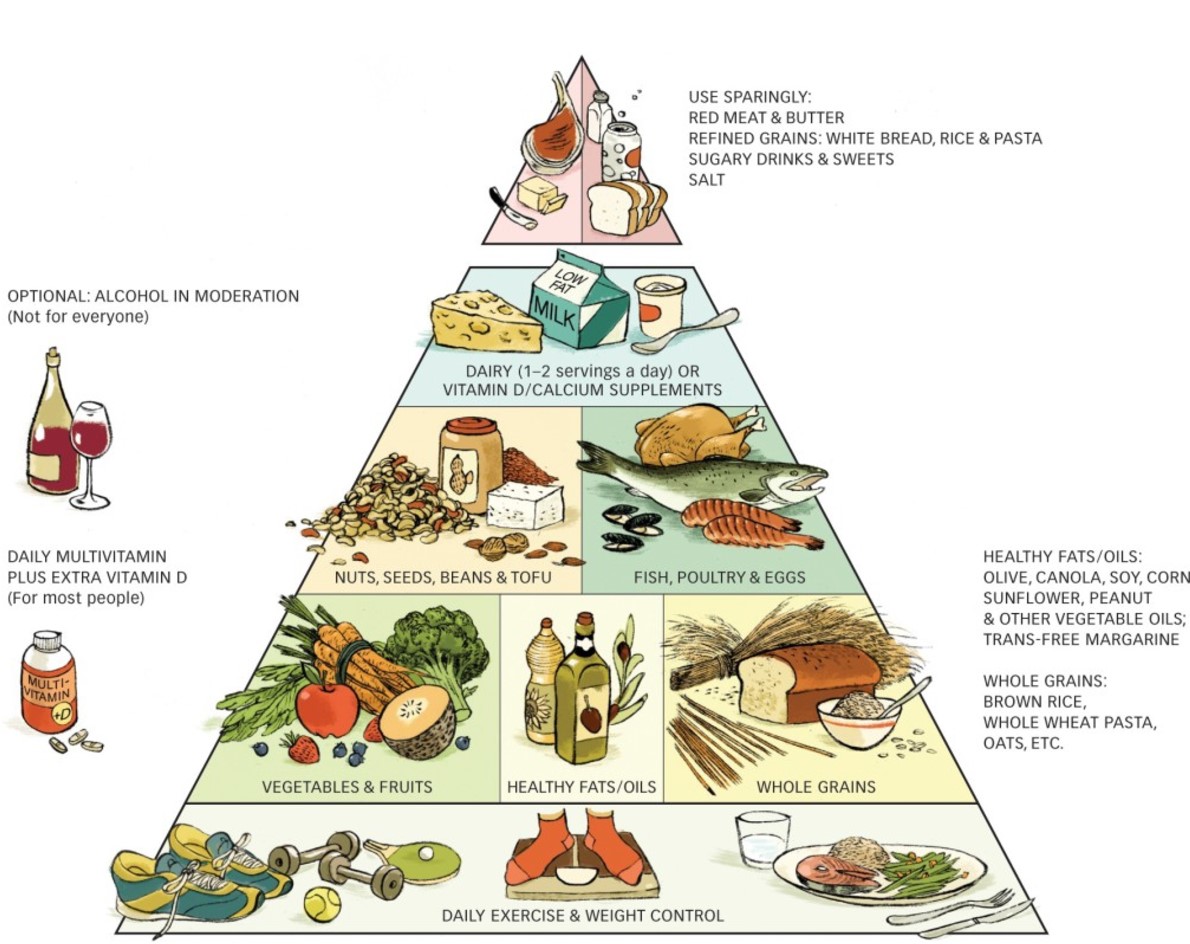
Source: Healthy Eating Pyramid – Harvard School of Public Health (2005)
What you eat is also important. The Healthy Eating Pyramid shows how you should plan your diet. You can eat plenty of (1) vegetables & fruits, (2) healthy plant oils (olive, canola, soy, sunflower) and (3) whole grain carbohydrates. For protein – eat moderate amounts of (1) nuts, seeds, legumes, tofu or (2) fish, poultry, eggs. For calcium & vitamin D – eat some dairy products.
The following foods are unhealthy and should be eaten in sparing amounts: (1) red meats (2) white rice, white bread, potatoes and (3) food and drinks with high sugar content6. Whenever possible – replace processed foods with natural foods.
Joint Nutrition
Calcium and vitamin D help to keep your bones strong. Dairy products (milk, cheese, yogurt) are the best sources of calcium. Other options are almonds, green, leafy vegetables (broccoli, kale) and salmon. Good sources of vitamin D are milk, fish (salmon, mackerel, herring) and egg yolk. The average adult should consume 1000-1500 mg of calcium, and 400-800 IU of Vitamin D each day. If you are not getting enough calcium from food, you can consider taking calcium and vitamin D supplements10.
You will also want your cartilage to be well-nourished. Cartilage is the connective tissue that protects your joints. It is a strong and elastic tissue that protects bone from damaging bone when they come into contact with each other11. Joint cartilage is usually 2-4 mm thick12. It consists mostly of a protein called collagen (60-70%) and substances called proteoglycans (5-15%)13.
Collagen is the main component of skin, tendons, ligaments and cartilage. It is the most abundant protein in the body. Collagen is what gives cartilage its structure, strength, flexibility and smoothness. It forms the extra-cellular matrix that holds cartilage together.
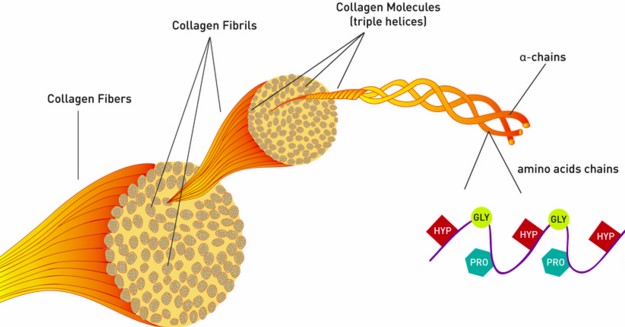
Source: www.proto-col.com/blog/2014/07/collagen/
Collagen fibrils are made from chains of four repeating amino acids i.e. glycine, proline, hydroxyproline and hydroxylysine. These amino acids are not usually abundant in our regular diet. To a certain extent – the body can make them. But as we get older – the body’s ability to make enough of these amino acids may diminish. Nutritionists therefore recommend taking 5-10 grams of collagen daily in order to support regeneration of collagen14. Many people take collagen to get better skin.
In order to support collagen synthesis – some specific nutrients are also essential. These include vitamin C and vitamins B1, B2, B6. You should strive for a diet rich in vitamins C (fruits & vegetables) and vitamins B1, B2, B6 (whole grains, lentils, nuts, dark leafy vegetables). Magnesium also has an important role to play in the synthesis and degradation of collagen. Magnesium rich foods include dark leafy greens, nuts, seeds, fish, beans, whole grains, avocados, yogurt, bananas, dried fruit and dark chocolate. If you are deficient in any of these micronutrients – you will need to supplement them. Otherwise – your body will not be able to make collagen efficiently.
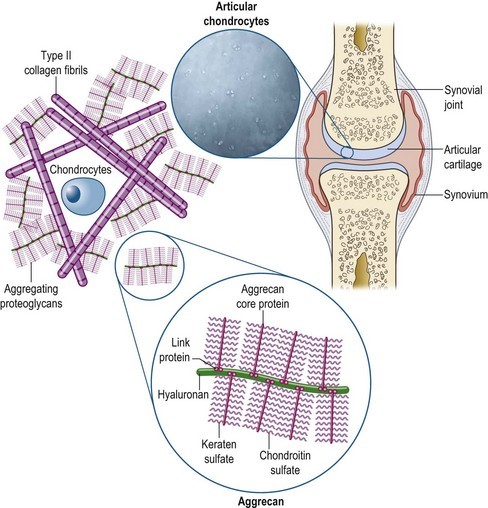
Source: https://veteriankey.com/oral-joint-supplements-in-the-management-of-osteoarthritis/
The other component of cartilage are proteoglycans – a protein-sugar complex. The function of proteoglycan is to attract water and expand the cartilage. This gives cartilage the ability to resist compressive forces.
Proteoglycans are made from chains of substances called glucose-amino-glycans (GAGs). Examples of GAGs are chondroitin and keratan. The proteoglycan “aggrecan” for example contain more than 100 chains of chondroitin sulfate and keratan sulfate. GAGs themselves are made from a substrate called glucosamine.
Unhealthy Joints - Osteo-Arthritis
Osteo-Arthritis (OA) simply means “bone joint inflammation”. It is the most common chronic joint problem. OA occurs when the cartilage between joints breaks down leading to trauma and bone damage. On X-rays – you can see a visible narrowing or sometimes even absence of space between the joint surfaces.
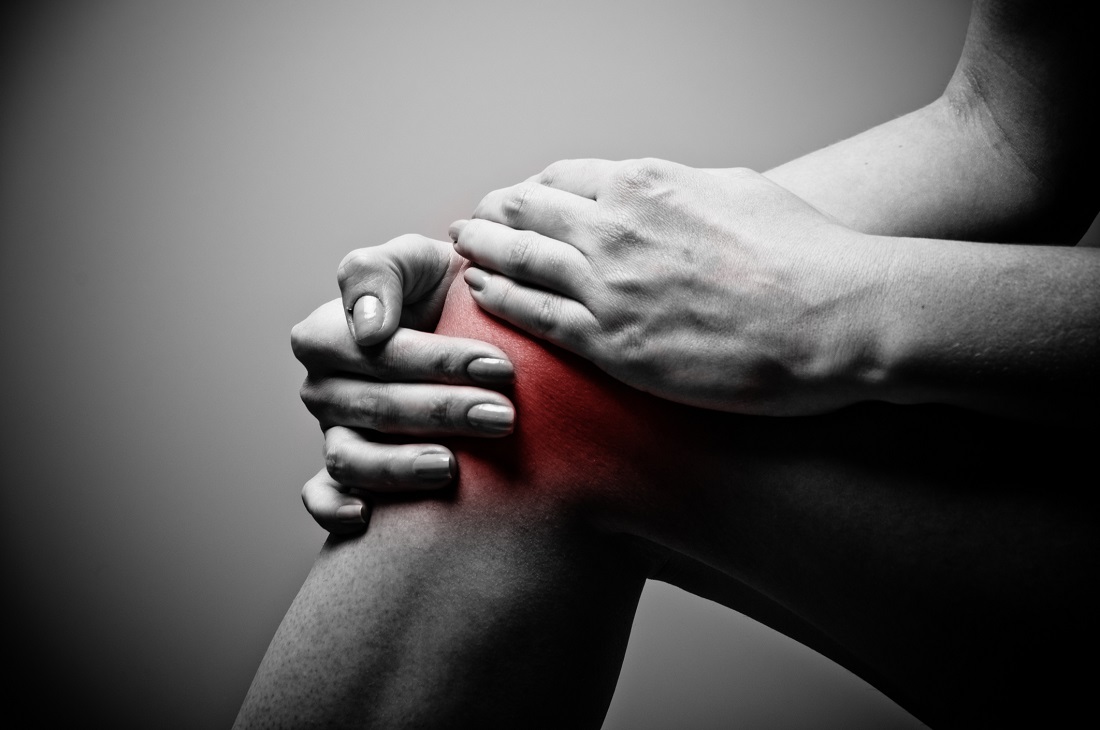 |
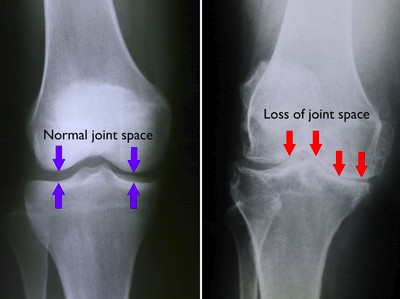 |
In OA – the clinical symptoms start slowly. At first – patients will have minimal symptoms. As their condition worsens – they begin to experience joint stiffness and then, pain, swelling, joint failure and immobility16.
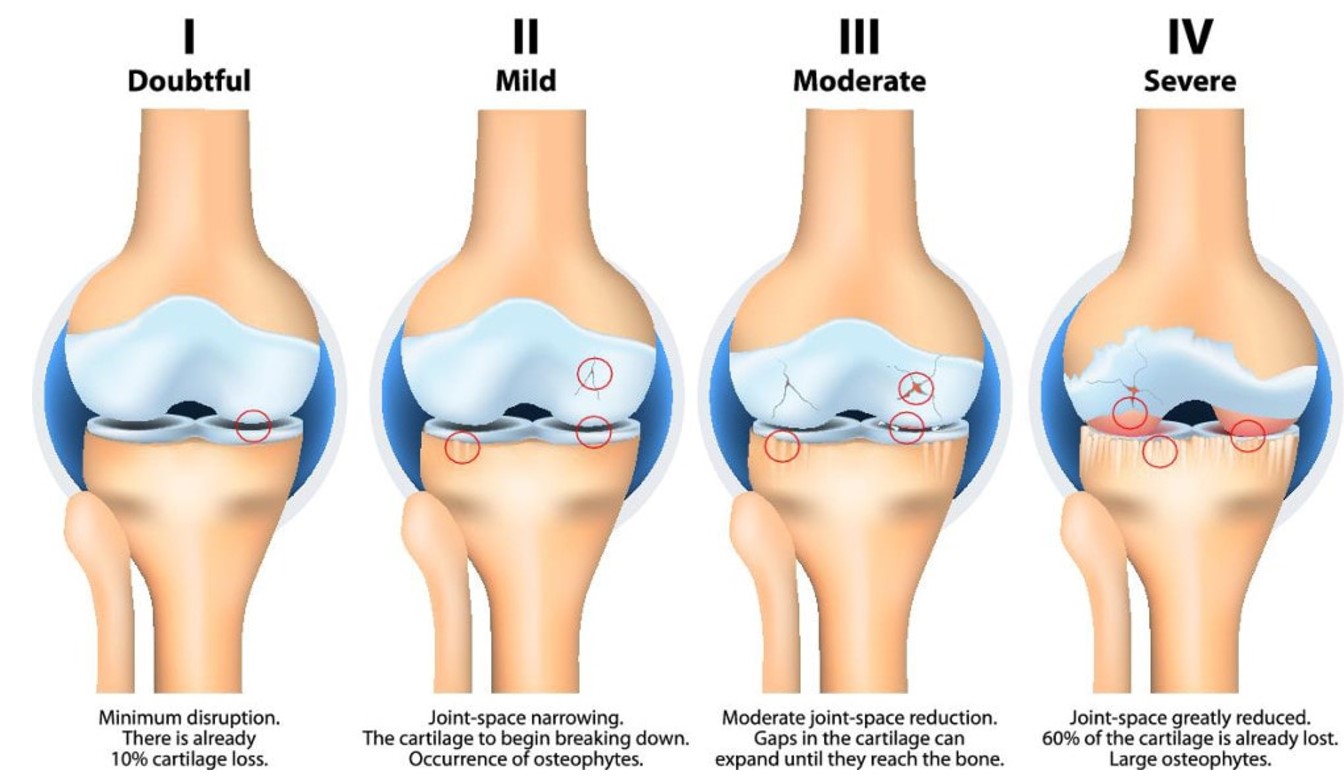
Source: http://www.braceaccess.com/knee-hip-osteoarthritis/
Osteo-Arthritis (OA) is an age-related disorder. Your risk of getting OA increases as you get older. One study showed that 40-80% of people aged 50 years or older have radiographic evidence of osteo-arthritis even though they have not experienced joint pain17. When OA becomes symptomatic – it is a leading cause of disability and has a profound impact on a person’s life18, 19. 80% of affected individuals have limited mobility. 25% are unable to perform important activities of daily living like walking, bathing, dressing19. These patients feel helpless and often experience depression.
OA is not confined to humans. It occurs in animals as well. OA is common in horses – 60% of horses become lame because of OA. The osteo-arthritic joints below come from female pigs and illustrates the physical changes in an osteo-arthritic joint.
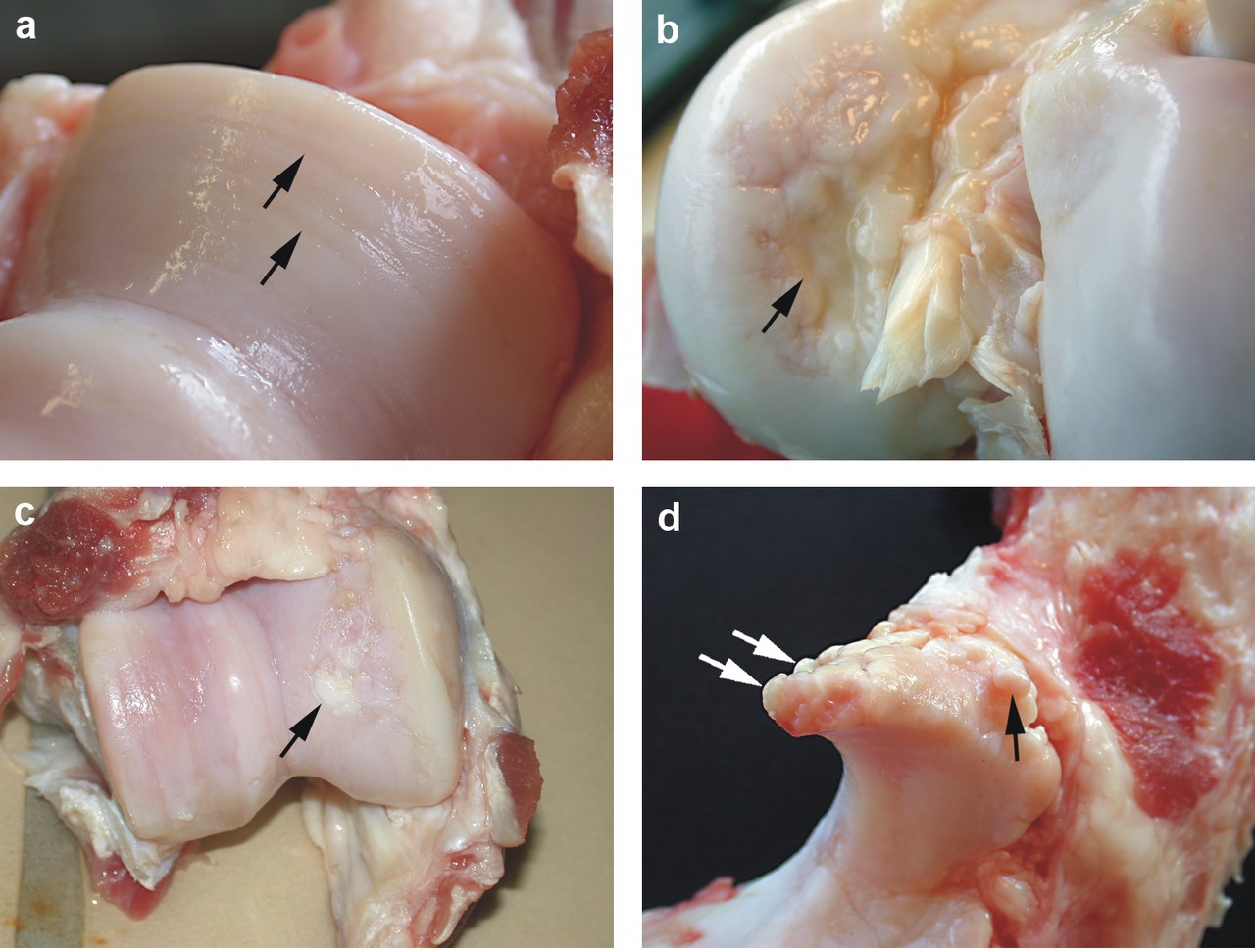
(a) cartilage erosion (b) cartilage ulceration (c) cartilage repair (d) osteophyte (bone spur) formation
Source: Kirk RK et al. Acta Veterinaria Scandinavica. 2008;50:5. doi:10.1186/1751-0147-50-5
How can we prevent OA? Maintaining a healthy body weight, regular exercise, avoiding joint injuries and eating a healthy diet are the best ways20.
If you already have symptoms of OA – it’s best to consult a doctor for advice. Your doctor will first exclude other joint disorders like rheumatoid arthritis. If the diagnosis of OA is confirmed – he will probably advise you to reduce weight, exercise regularly and perform slow gentle stretching.
Your doctor will be able to prescribe a variety of medications i.e. oral pain-killing medications (analgesics & anti-inflammatory drugs), injections of steroids or hyaluronic acid. A physiotherapist can assist with heat/cold therapy, range of motion/flexibility exercises and assistive devices (cane, walker etc.). When these measures are not effective – your doctor may refer you to an orthopaedic surgeon to evaluate whether you are a candidate for surgery. The orthopaedic surgeon can replace your diseased joint with a surgical implant20. There may be some movement limitation – but the clinical results are usually quite good. If you suffer from knee OA – you often have to replace both knees.
Joint Supplements
Many people with OA may prefer natural or alternative therapies to address their symptoms. These alternatives include nutritional supplements, acupuncture or acupressure, massage, relaxation techniques and hydrotherapy.
OA patients may be worried about taking pain-killers for long periods of time. Pain-killers are effective in relieving pain. But they don’t actually reverse the disease process. They can also cause side-effects (gastro-intestinal bleeding, heart attacks, strokes). Nutritional supplements are considered generally benign. If nutritional supplements can help relieve symptoms and restore mobility – it would be a very attractive option for many people with OA.
There are distinctive changes to joint cartilage in patients with OA. There is decreased proteoglycan content. And the collagen network is disrupted and broken down. Since the primary cause of OA is the breakdown of cartilage - it is natural to target nutritional supplements which can help stimulate proteoglycan or collagen synthesis – the two main constituents of healthy cartilage.
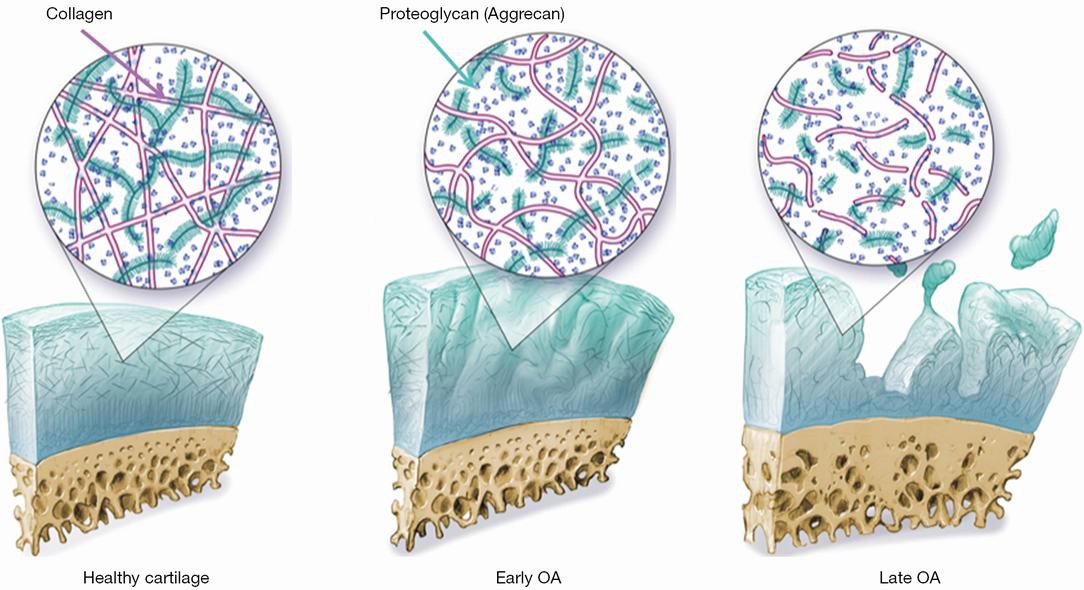
Source: Articular cartilage and degeneration during osteoarthritis (OA). J Magn Reson Imaging 38:991-1008 (2013)
Glucosamine is the amino-sugar from which GAGs and proteoglycans are made. It is commercially sourced from crustaceans (crabs, prawns, lobsters). It is the best studied nutritional supplement in OA. Many studies have been published – but not all of them are favorable. Experts think that the effect of glucosamine is modest. However – if it is helpful to OA patients – they recommend that patients continue with it. Glucosamine is usually taken together with chondroitin. The recommended dosages are glucosamine 1500mg and chondroitin 800mg23.
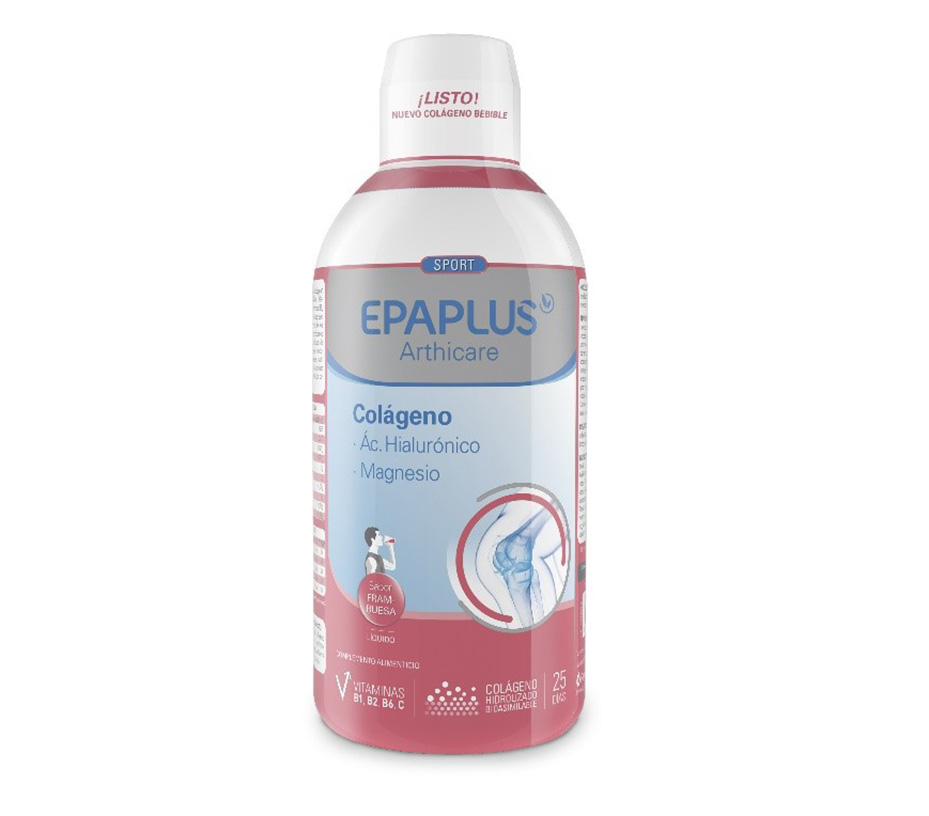 |
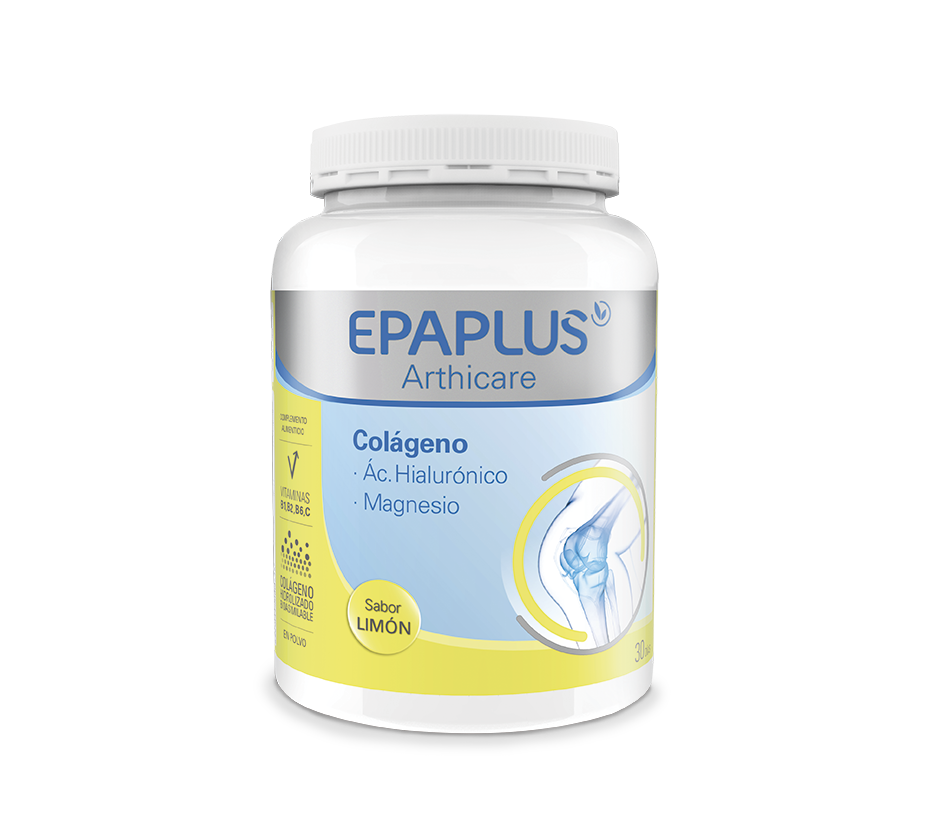 |
Collagen-based joint supplements have begun to become popular recently. Native or untreated collagen is very poorly absorbed. However – collagen can be pre-treated by heat and enzymes and be converted to collagen hydrolysate – a highly absorbable form of collagen24.
Research shows that collagen hydrolysate is well-absorbed and radio-active labelled components (proline) were shown to accumulate in joints24. Interestingly, collagen hydrolysate was also found to stimuate the production of extra-cellular collagen25. Histological studies in animals also show that collagen hydrolysate can reverse the damage caused by osteo-arthritis26.
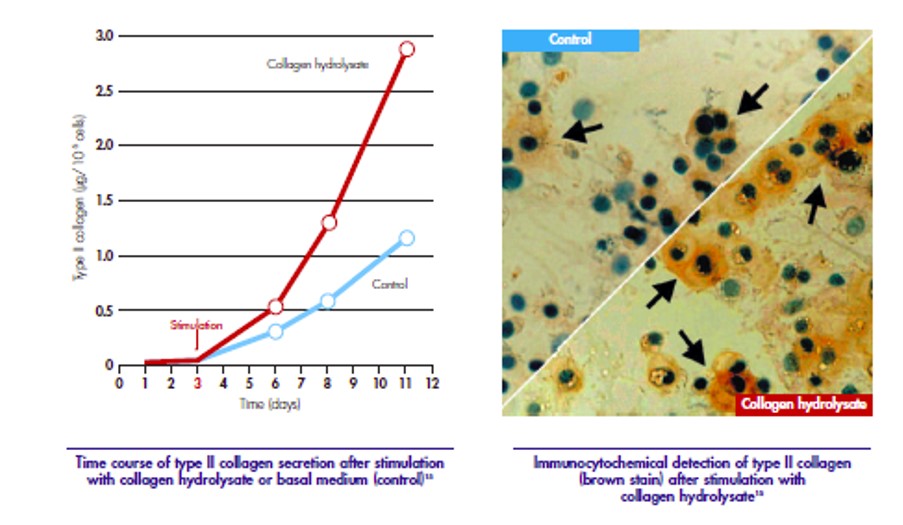
Source: S Oesser, J Seifert Cell Tissue Res. 2003; 311:393-399
One interesting study with collagen hydrolysate used enhanced MRI techniques to measure the amount of proteoglycan in patients who have or have not taken collagen hydrolysate. Interestingly – patients who consumed collagen hydrolysate showed increased levels of proteoglycan (green) compared to patients who did not consume collagen hydrolysate (red). This study shows that collagen hydrolysate can increase the amount of proteoglycan levels in the knee joint27. In other words – you don’t necessarily have to supplement proteoglycans – to get more proteoglycans in your joints.
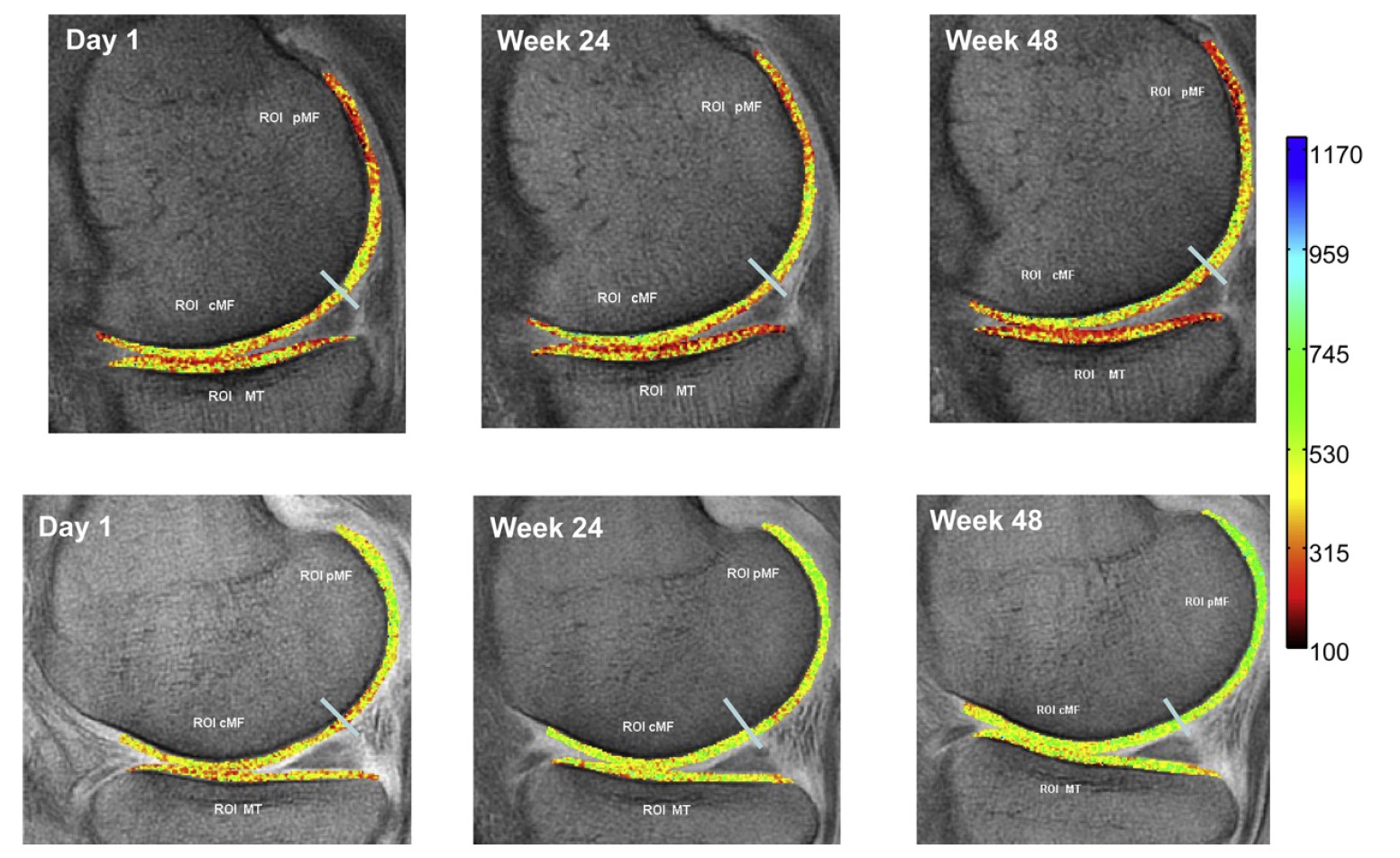
dGEMRIC images from patients who consumed placebo (top) and collagen hydrolysate (bottom). Red areas in the placebo-treated patients reflect low proteoglycan levels. Patients on collagen hydrolysate showed a shift from red to yellow-green.
There are not that many clinical studies performed with collagen hydrolysate on patients with OA. But these studies show that collagen hydrolysate is generally safe and seem to provide improvement in pain and joint function24.28.
There are various other ingredients like hyaluronic acid, MSM and herbs like Boswellia, tumeric/cucurmin, ginger, capsaicin etc. that have been used and studied for patients with OA29. Some of these ingredients are incorporated in combination joint supplements that contain collagen hydrolysate, glucosamine or both. If the regular joint supplements don’t work – it may be worthwhile to try other ingredients or use one of these combination joint supplements. If pain persists – you are well-advised to see your doctor.
References:
- www.webmd.com/rheumatoid-arthritis/better-living-ra-17/active/slideshow-keep-joints-healthy
- www.webmd.com/arthritis/caring-your-joints#1
- www.arthritis.org/living-with-arthritis/pain-management/joint-protection/joint-health.php
- Felson DT et al “The Framingham Study”. Ann. Intern. Med 116:535-539 (1992).
- Bliddal H et al Obesity Review 15(7):578-586 (2014)
- www.mayoclinic.org/healthy-lifestyle/fitness/expert-answers/exercise/faq-20057916
- www.runnersworld.com/health/the-big-7-body-breakdowns
- Roos EM Current Opinion in Rheumatology 17(2):195-200 (2005)
- www.health.harvard.edu/heart-health/healthy-eating-a-guide-to-the-new-nutrition
- www.arthritis.org/living-with-arthritis/treatments/natural/vitamins-minerals/vitamin-d-deficiency.php
- www.arthritis-health.com/types/joint-anatomy/what-cartilage
- Fox AJS et al Sports Health 1(6):461-468 (2009)
- “The Adult Knee” Volume 1. Editor JJ Callaghan et al. Lippincott, Williams & Wilkins (2003) pp 109
- www.maxlugavere.com/blog/why-you-should-add-more-collagen-to-your-diet
- www.sdcenterforhealth.com/topics/146-the-importance-of-magnesium-the-qforgottenq-electrolyte
- www.arthritis.org/about-arthritis/types/osteoarthritis/
- Guermazi A et al “Framingham Osteo-Arthritis Study” BMJ 345:e5339 (2012)
- Lementowski PW et al. Am J Orthop 37:148–151 (2008)
- Centers for Disease Control and Prevention. Osteoarthritis (2011)
- www.webmd.com/osteoarthritis/osteoarthritis-prevention-1#1
- www.arthritis.org/about-arthritis/types/osteoarthritis/treatment.php
- www.webmd.com/osteoarthritis/nutritional-supplements-osteoarthritis#2
- www.arthritis.org/living-with-arthritis/treatments/natural/supplements-herbs/glucosamine-chondroitin-osteoarthritis.php
- Bello AE and Oesser S “Collagen Hydrolysate for the Treatment of OA etc.” Current Med Res & Opinion 22(11):2221-2232 (2006)
- S Oesser, J Seifert Cell Tissue Res. 2003; 311:393-399
- Oesser S et al 2007; Osteoarthritis Cartilage 15: C61-C62, 94
- McAlindon TE et al. Osteoarthritis and Cartilage 19:399-405 (2011)
- www.arthritisresearchuk.org/arthritis-information/complementary-and-alternative-medicines/cam-report/complementary-medicines-for-rheumatoid-arthritis/collagen/trials-for-oa.aspx
- www.arthritis.org/living-with-arthritis/treatments/natural/supplements-herbs/9-supplements-arthritis.php